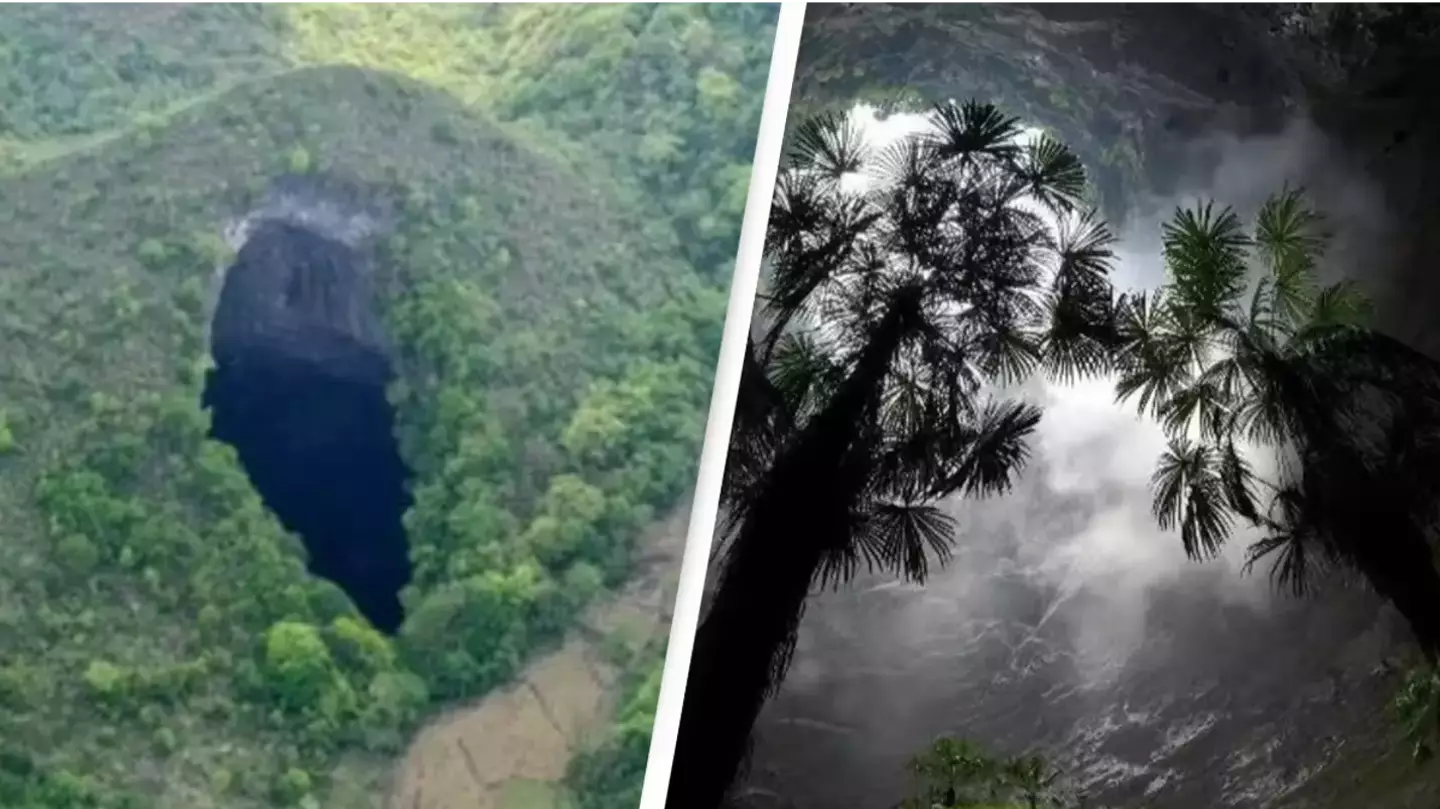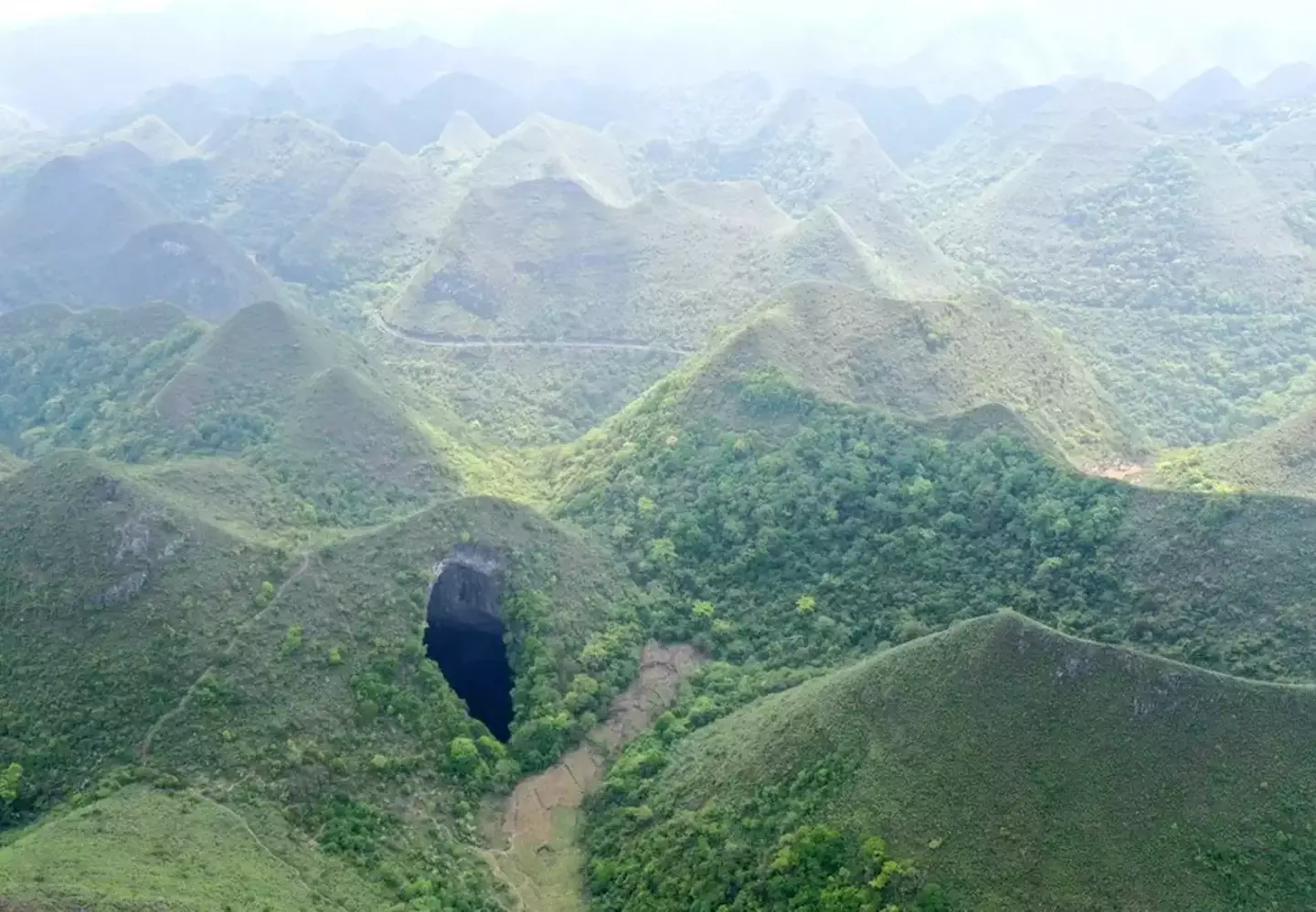
A team of scientists discovered an ancient forest more than 600 feet underground after probing a sinkhole in China.
Back in 2022, explorers flocked to the Leye-Fengshan Global Geopark in China’s Guangxi Zhuang Autonomous Region where they found a sinkhole.
At the time, experts measured the phenomenon at over 1,000 feet in length, 490 feet in width and almost 630 feet in depth.
Advert
As well as archaic trees, three giant cave entrances were found within the sinkhole and researchers believe there may be unknown species of plants and animals dwelling inside.

This is because sinkholes and caves alike are often refuges for life and can also help cultivate crops.
According to UNESCO, the Geopark where the sinkhole was discovered in May 2022 is described as a ‘territory of caves’, and that it features the ‘world’s longest natural bridge’.
Advert
The website explains: “The UNESCO Global Geopark is primarily sedimentary with more than 60 percent of 3000m thick Devonian to Permian carbonate rocks.
“It forms an 'S'-shaped structure and a rhombus configuration in the karst areas of Leye and Fengshan counties respectively, which controlled two large subterranean rivers’ development, the Bailang and Poyue.”
It’s said that the Buliuhe River was formed between the two bodies of water and that various ‘karst geosites’ were also created.

Advert
A ‘karst’ is a terrain where dissolving bedrock can create sinkholes due to eroding landscape both above and below ground.
Examples of karsts within the Leye-Fengshan Global Geopark include karst springs, karst windows (tiankengs), natural bridges and extensive caves.
Speaking to Live Science about the sinkhole expedition, leader Chen Lixin said at the time: “I wouldn’t be surprised to know that there are species found in these caves that have never been reported or described by science until now.”
He added that some of the trees found in the ancient forest were nearly 130 feet tall.
Advert
George Veni, the executive director of the National Cave and Karst Research Institute, also told the publication that differences in geology, climate and other factors meant that a karst can be dramatically different depending on where it is.
"In China, you have this incredibly visually spectacular karst with enormous sinkholes and giant cave entrances and so forth,” he explained.

“In other parts of the world you walk out on the karst and you really don’t notice anything. Sinkholes might be quite subdued, only a meter or two in diameter.
Advert
"Cave entrances might be very small, so you have to squeeze your way into them.”
According to the expert, southern China is home to such vast karst topography that its landscape is prone to creating many deep sinkholes and explorable caves.
He added that slightly acidic rainwater is usually the cause of bedrock beginning to dissolve in a karst landscape.
It’s said that the rainwater becomes more acidic as it picks up carbon dioxide and runs through the soil.
Then, it trickles and flows through cracks in the bedrock before it eventually hollows them out into tunnels and voids.
If one of these chambers becomes large enough then the ceiling will collapse and a potentially giant sinkhole will be formed.
Advert
Interestingly, the Geopark sinkhole was the 30th to be discovered in the region, but it isn’t the biggest.
The Xiaozhai Tiankeng sinkhole holds the crown for being the world’s biggest sinkhole with a volume of 130 million cubic meters.
‘Tiankeng’ means ‘The Heavenly Pit’ and this natural wonder is home to over 1200 species of plants and animals.
The sinkhole there is 2,100 feet deep, 2,000 feet long and 1,760 feet wide and includes a waterfall within its depths.
Advert
It’s pretty speculator, to put it bluntly.
Topics: China, Nature, Environment, Climate Change, World News
